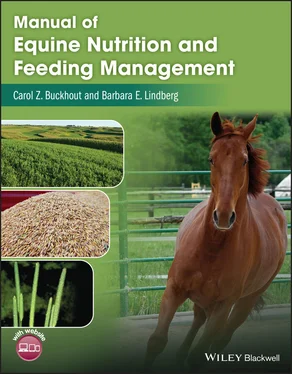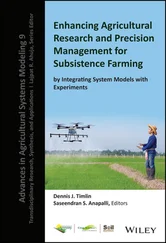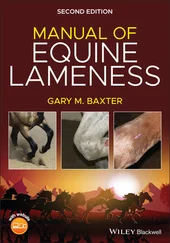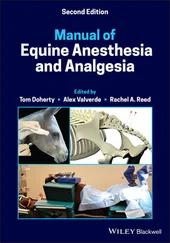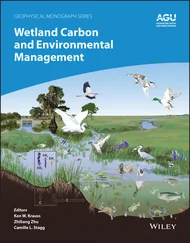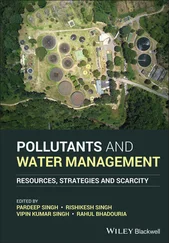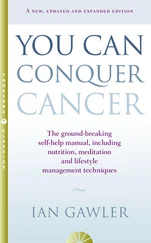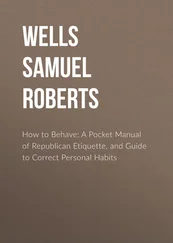1 Cover
2 Title Page Manual of Equine Nutrition and Feeding Management First Edition Authors: Carol Z. Buckhout, M.P.S., P.A.S. Professor Emerita Equine Business Management Cazenovia College Barbara E. Lindberg, M.S. Ed. Associate Professor Equine Business Management Cazenovia College Artwork: Rachel C. Monticelli-Turner dobbindesigns@yahoo.com University of Illinois at Chicago, M.S. Biomedical Visualization, 2008 Cazenovia College B.F.A., 2005 Dutchess Community College, A.A.S. Commercial Art, 2002 Cazenovia College, A.A.S. Equine Studies, 1992 Risa Kent www.risakent.com Cazenovia College, B.P.S., 2010 Carmel Keeley Cazenovia College, B.P.S., 2009 Research Assistant and Text Design: Sara Tanner Mastellar, Ph.D. Cazenovia College, B.P.S., 2009 With special thanks to: Laurie Gilmore Selleck, M.F.A. Professor Visual Communications Cazenovia College
3 Copyright
4 Dedication
5 Preface Disclaimer
6 About the Companion Website
7 Laboratory 1: THE EQUINE DIGESTIVE SYSTEM Introduction: Objectives: Question for further discussion: General overview: A. Primary organs of digestion: The upper digestive tract B. Primary organs of digestion: The lower digestive tract C. Secondary organs of digestion For additional information: YouTube videos: References:
8 Laboratory 2: PLANT IDENTIFICATION Introduction: Objectives: Questions for further discussion: A. Grasses B. Legumes A. Nuisance plants: these are not poisonous to the horse, but they do not supply proper nutritional value B. Feed and bedding conditions that are harmful to horses C. Poisonous plants: These will cause some sort of external or internal damage to the horse, affecting its health and, in some cases, even causing death For additional information: Helpful websites/links on toxic plants: References:
9 Laboratory 3: FORAGE 1: PASTURE Introduction: Objectives: Questions for further discussion: General overview: Pastures for horses References:
10 Laboratory 4: FORAGE 2: HAY FOR HORSES Introduction: Objectives: Questions for further discussion: Hay For additional information: References:
11 Laboratory 5: CONCENTRATES FOR HORSES Introduction: Objectives: Questions for further discussion: General overview A. Definition B. Characteristics C. Classification D. Processed concentrate feeds E. Feeding grain to horses: suggestions and rules of thumb References:
12 Laboratory 6: (1) BY-PRODUCT FEEDS AND ADDITIVES (2) THE CONCEPTS OF “AS SAMPLED” AND “DRY MATTER” Introduction: Objectives: Questions for further discussion: By-product feeds Feed additives As sampled and dry matter conversions General overview: Examples of calculations between as sampled and dry matter References:
13 Laboratory 7: DETERMINING THE NUTRIENT CONTENT OF FEEDS Introduction: Objectives: Question for further discussion: General overview Practice problems: Calculating the amount of nutrients in feeds Reference:
14 Laboratory 8: THE USE OF FEEDING STANDARDS AND ENGLISH-METRIC CONVERSIONS Introduction: Objectives: Question for further discussion: General overview English/metric conversions:
15 Laboratory 9: RATION EVALUATION PART I Introduction: Objectives: Questions for further discussion: Introduction to Ration Evaluation References:
16 Laboratory 10: RATION EVALUATION PART II Introduction: Objectives: Question for further discussion: Introduction: Utilizing the information on a commercial feed label Example Ration Evaluation Using a Forage Analysis and a Commercial Feed Label: Comments:
17 Laboratory 11: THE PEARSON SQUARE Introduction: Objectives: Questions for further discussion: The Pearson Square Procedure for Calculating the Pearson Square: Important Points to Remember: References:
18 Laboratory 12: CORRECTING NUTRIENT DEFICIENCIES IN A RATION Introduction: Objectives: Questions for further discussion: Correcting Deficiencies: Lack Divided by Gain
19 Laboratory 13: DETERMINING THE COST OF FEEDING Introduction: Objectives: Question for further discussion: General overview: Determining the least cost of two forages based on digestible energy (Lewis, 1996, pp. 140): Determining the least cost of two concentrate mixes based on crude protein: (Lewis, 1996, pp. 140–141) References:
20 INDEX
21 End User License Agreement
1 Chapter 1Table 1.1 Enzymes in Digestion
2 Chapter 7Table 7.1 Correlations Between Crude Fiber, Crude Fat, and Digestible Energ...
3 Chapter 10Table 10.1 Correlations Between Crude Fiber, Crude Fat, and Digestible Energ...
1 Chapter 1 Figure 1.1 Teeth of an adult horse. Figure 1.2 Sagittal section and occlusal surfaces of a permanent lower incis... Figure 1.3 Teeth. Figure 1.4 Grinding surfaces. Figure 1.5 Dorsal view of the tongue and pharynx. Figure 1.6 Upper digestive tract. Figure 1.7 Inside view of the stomach and cranial duodenum. Figure 1.8 Organs of the equine digestive system. Figure 1.9 Large intestine. Figure 1.10 Position of organs of digestion, right view. Figure 1.11 Position of organs of digestion, left view.
2 Chapter 2Figure 2.1 Timothy grass: Phleum pratense. Figure 2.2 Orchard grass: Dactylis glomerata. Figure 2.3 Canada bluegrass: Poa compressa. Figure 2.4 Smooth brome grass: Bromus inermis. Figure 2.5 Reed canary grass: Phalaris arundinacea. Figure 2.6 Alfalfa: Medicago sativa. Figure 2.7 Ladino clover: Trifolium repens. Figure 2.8 Red clover: Trifolium pratense. Figure 2.9 Alsike clover: Trifolium hybridium. Figure 2.10 Birdsfoot trefoil: Lotus tenuis.
3 Chapter 5Figure 5.1 Oats: Avena sativa. Figure 5.2 Corn: Zea mays. Figure 5.3 Barley: Hordeum vulgare. Figure 5.4 Wheat: Triticum aestivum. Figure 5.5 Soybeans: Glycine max. Figure 5.6 Flax: Linum usitatissimum. Figure 5.7 Sorghum: Sorghum bicolor. Figure 5.8 Example of a feed label. Figure 5.9 Example of a feed label.
4 Chapter 6Figure 6.1 As sampled feed.
5 Chapter 10Figure 10.1 Feed label example.
6 Chapter 12Figure 12.1 Feed label example. Figure 12.2 Feed label example. Figure 12.3 Feed label example.
1 Cover
2 Table of Contents
3 Title Page
4 Copyright
5 Dedication
6 Preface
7 About the Companion Website
8 Begin Reading
9 Index
10 End User License Agreement
1 iii
2 iv
3 v
4 vii
5 viii
6 1
7 2
8 3
9 4
10 5
11 6
12 7
13 8
14 9
15 10
16 11
17 12
18 13
19 14
Читать дальше
